Art Nouveau Ecole de Nancy Pate De Verre Signed Laflor Crocus Cameo Vase
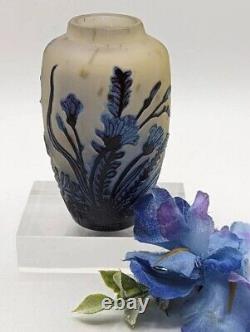
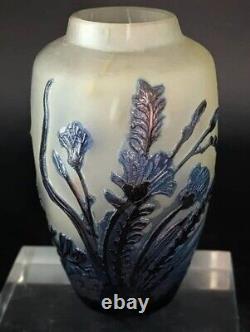
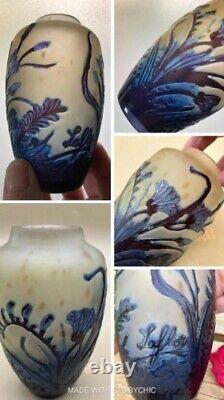
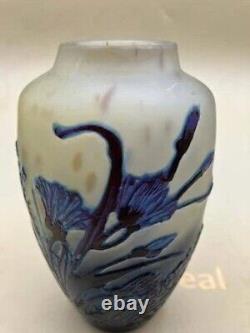
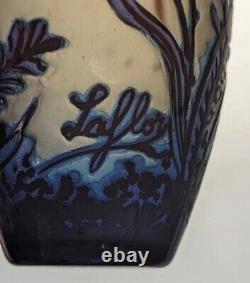
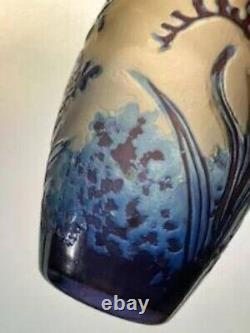
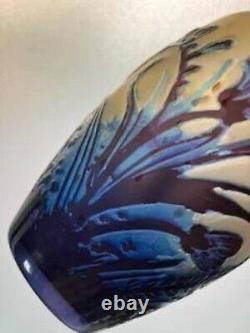
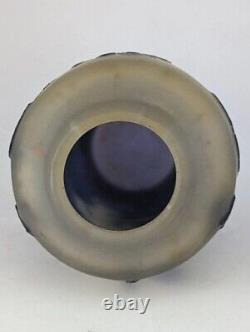
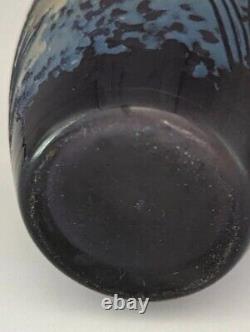
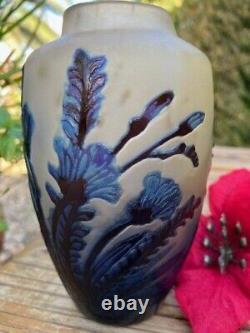

Pretty Ecole de Nancy Pate De Verre (Glass Paste) vase signed Laflor. This Piece is most likely from Early 1900S.
This is a Glass Paste vase with Mold blown multi-layer glass in tiny yellow, either light blue or white (splatters), (frosted) maybe I'd say Satin finished Clear Cased Base, purple and blue bottom with the decoration of crocus, signature engraved. This is an Acid Etched piece which creates the stunning relief design. This piece is a combination of Cameo Glass technique and Glass paste. Unlike its counterpart of cameo glass this mold blown glass paste in layers and then etched in acid to create the design.
Cameo Glass piece are hand blown and will almost always have a ground pontil on the base. Measures at 5" H X 1.25" Top Opening Diameter X 1.5" Base diameter X Almost 2" Widest Point. This Piece was produced at the École de Nancy, or the Nancy School a group of Art Nouveau artisans and designers working in Nancy, France between 1890 and 1914.
Major figures included the furniture designer Louis Majorelle, ebonist and glass artist Jacques Grüber, the glass and furniture designer Émile Gallé, and the crystal manufactory of Daum. Their work was largely inspired by floral and vegetal forms found in the region. The goal of the group was to produce in series ordinary objects, such as furniture, glassware, and pottery, with fine craftsmanship and in original forms, making art objects available for people's homes. This Piece has no cracks, but some minor flea bites on the base rim they could be defects from acid etching not sure since they feel smooth not really rough like a typical flea bite. Such a unique piece to add to anyone's glass collection or art nouveau inspired home.
Pate de Verre is a technique used to impart a frosted, translucent quality to glass objects. The term means "glass paste" in French and refers to a casting technique for making objects by grinding glass into a fine powder, adding a binder to create a paste, and adding a fluxing medium to facilitate melting.
The paste is brushed or tamped into a mold, dried, and fused by firing. After annealing, the object is removed from the mold and finished by cold working. How Cameo Glass is Made. Cased glass and cameo glass were two techniques. The cased glass was made of two different layers of glass of different colors, fused together by heat.
The first case of the layer is made in a cold. When it is finished and cooled, a second layer is blown inside the first Then the piece is placed into the furnace, so the two layers fuse together. This could be repeated for multiple layers of glass.
Cameo glass was a means of decorating cased glass. The cased glass of two or more colors was carved with a diamond saw or etched with acid, so that the colors of the layer underneath were visible and created a design.

